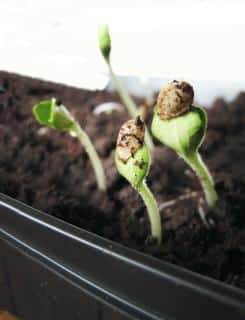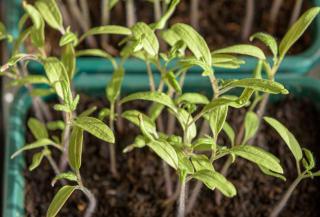

Sowing in trays is perfectly suited to growing plants in a sheltered place.
Thanks to small holes drilled at the bottom of the tray, drainage can be optimized and is very effective.
It makes it easy to start a great many seedlings in very little space. Later, the most vigorous are moved to individual pots or to the ground.
A great many plants, vegetables and flowers can be sown in this manner. Avoid this technique for taproot-type plants (like carrots) and plants that should be started directly in the growing bed.
It’s important to prepare your tray well, with the right soil mix for each type of seed.
 Place clay pebbles at the bottom of the tray (in a layer about ½ to 1 inch (1 to 2 cm) thick) to ensure drainage.
Place clay pebbles at the bottom of the tray (in a layer about ½ to 1 inch (1 to 2 cm) thick) to ensure drainage.Now, simply mist with water every day or two, to make sure the tray stays moist but not soggy.

Thin by removing the most scraggly and weakest seedlings. Keep the most vigorous ones and move each one to its own individual nursery pot.
Read also on sowing: